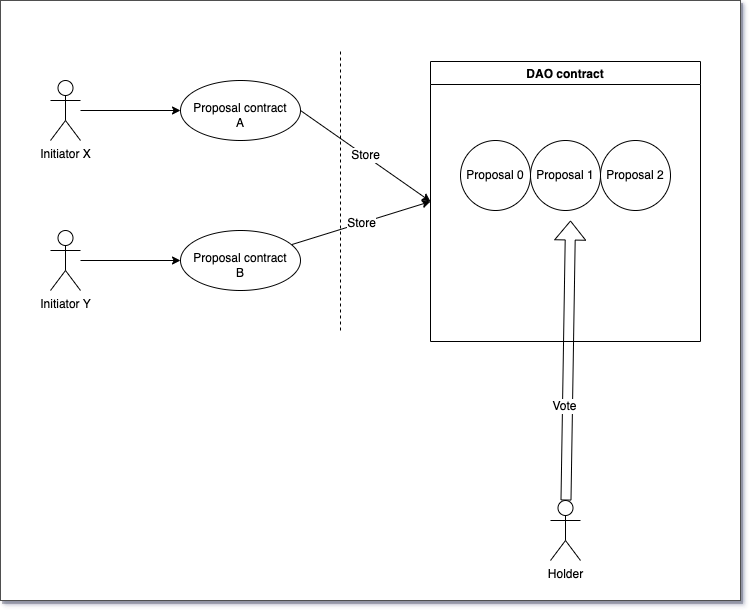Starcoin Decentralized Governance
Decentralized governance is becoming increasingly important in the blockchain space. With Starcoin, users have the ability to implement DAO (Decentralized Autonomous Organization) capabilities using the Move language. Moreover, the Starcoin standard library includes a DAO implementation, enabling users to vote on on-chain parameters and upgrades. This article will explain the DAO module and governance process in more detail.
DAO Functionality
A basic DAO governance process would include the following.
- The initiator initiates the proposal.
- Users vote.
- The proposal is approved and implemented.

One of the significant differences between Starcoin’s DAO implementation and Ethereum’s DAO implementation is that in Starcoin, each type of proposal is controlled by a separate contract module, which implements the proposal initiation and execution.
This is because, in Ethereum, smart contracts can call other contract interfaces through dynamic distribution, so it is possible for a single contract to initiate all types of proposals just by calling them dynamically within the contract. But Move is a model of static distribution of function calls (not much here, interested readers can read the Move-related documentation); all code calls must be determined at compile time and can not do dynamic distribution. Hence the difference mentioned above.
The DAO module abstracts the proposal (a paradigm parameter of the DAO module) and identifies a proposal with a proposal_id. Still, it does not care about the proposal, leaving it to the user to decide. When voting, the user gets the details of a proposal through the DAPP and then directly calls the DAO module’s interface to vote for or against it.
This way, different proposals can implement their proposal logic but share the voting functionality of the DAO module.
The standard library provides the following types of proposals by default.
- ModifyDaoConfigPorposal: Proposal to change DAO polling parameters.
- OnChainConfigDao: Proposal to change on-chain parameters.
- UpgradeModuleDaoProposal: Proposal to upgrade the contract code.
- TreasuryWithdrawDaoProposal: Proposal to withdraw money from the treasury.
When issuing their Token, users can directly access the proposals in the standard library if they have similar needs or write more custom proposals if they have other more complex needs.
User Voting
When users vote, they need to pledge their Token, and the number of votes is proportional to the number of tokens, i.e., one coin, one vote. During the voting period, users can vote multiple times, withdraw their votes, or even turn against each other (from for to against, from against to for). After the voting period, users can withdraw their staked tokens immediately.
Proposal Passage and Execution
After the voting period, if the turnout passes and the number of yeses exceeds the number of noes, then the proposal is passed. At this point, anyone can send a transaction to mark the proposal as pending and place it in the queue to be executed. After the execution period has expired, anyone can send a transaction to execute the proposal. After the proposal is executed, the proposal initiator can delete his proposal and release the space on the chain occupied by the proposal.
A complete life cycle of a proposal is as follows:

Voting status notes:
- const PENDING: u8 = 1; //waiting for public period
- const ACTIVE: u8 = 2; //voting is in progress
- const DEFEATED: u8 = 3; //after the voting period, the number of votes in favor is less than or equal to the number of votes against, or the number of votes in favor is less than the voting threshold, the proposal is rejected
- const AGREED: u8 = 4; //after the voting period, the number of votes for is greater than the number of votes against, the proposal is passed
- const QUEUED: u8 = 5; //proposals that have been voted on are placed in the queue for public notice, which is currently 24 hours
- const EXECUTABLE: u8 = 6; //After the public notice period, the proposal enters the executable state. Anyone can trigger execution.
- const EXTRACTED: u8 = 7; //Proposal has been executed




